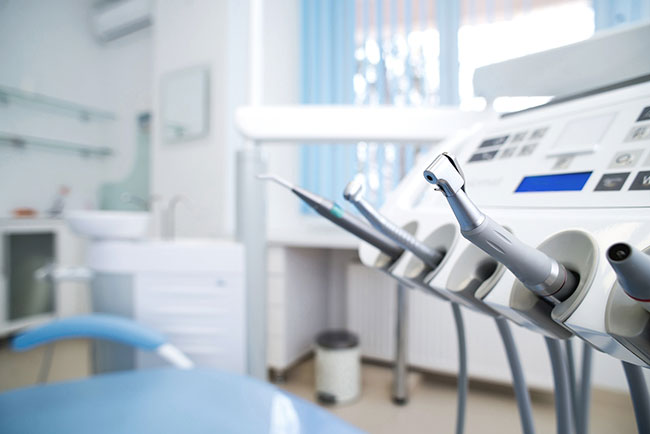Designing a Multi-specialty Dental Practice
Posted by HJT Design

Efficiency and convenience often drive patient compliance. A multispecialty dental practice gives patients the ability to visit one location for complete dental care. The efficient multispecialty model improves the patient experience, but does create design challenges. A multispecialty space must seamlessly integrate service and support activities across several treatment areas.
Design Upgrades for Multispecialty Practices
Multispecialty offices may provide routine dental services, oral surgery, periodontics, endodontics, and orthodontics. To support professionals in the space, a facility may need to invest in the following features:
- Sedated-patient exits. Exits not visible from the front of the building protect patient privacy and give sedated individuals a comfortable way to leave a procedure without navigating hallways and a waiting room to reach the parking lot.
- Centralized imaging centers with darkrooms or digital processing equipment. X-ray, cone-beam CT units, and other imaging equipment enhance diagnostic and treatment capabilities in every dental field. Dental professionals in a multipractice setup may need access to a centralized imaging area and radiology technicians. The number of patients and dental professionals using the center will dictate the size and location of the imaging center within the practice.
- Optimized specialized treatment spaces. For advanced dental procedures, specialized rooms with integrated sedation equipment, surgical equipment, and improved air-quality systems support surgeons and specialists performing complex and multi-person procedures. Some multispecialty practice designers recommend flexible operating spaces that can accommodate routine and specialized procedures.
- Multifunctional staff rooms. Flexible spaces allow professionals more value in restricted and unusual office layouts in large multi practice facilities. Flexible break rooms can also serve as conference spaces and training rooms. Creative designs can hide microwaves, refrigerators, and other equipment to accommodate multiple space needs. Offices with enough square footage may opt to create a flex space and a kitchen/break area. Themed spaces give large staffs the ability to relax and recharge throughout the day.
- Flexible privacy treatment spaces. General dentist spaces often feature open teeth cleaning areas and semi-private spaces, while more-specialized appointments call for a greater level of privacy. Flexible treatment spaces featuring added privacy doors and movable screens give professionals and patients the ability to customize a space based on need.
- Centralized storage and sterilization areas. Traditional dentist office designs often intersperse storage throughout treatment spaces. Modern designs highlight the benefits of centralized spaces for supplies and sterilization. Technicians and assistants can access location-optimized areas to prepare for treatments, manage sterilization practices, and gather supplies without searching through several treatment spaces. Centralized storage and sterilization also enhances inventory assessments and streamlines the resupplying process.
- Consultation spaces. Dentist practices can choose between offset and integrated consultation spaces inside a private treatment space. Modern consultation spaces typically feature a peninsula-style workstation that gives practitioners and patients easy access to computer models, x-ray results, and treatment presentations. Some arrangements may also include a television display for easy consultation visibility from any vantage point in the room.
- Centralized dental labs. Most dental labs sit in any available space, like a design afterthought. Travel between labs and centralized storage and sterilization areas should facilitate fast turnaround times. Multispecialty practices often position labs near closely integrated areas to support daily workflow and encourage industry best practices.
- Sound-dampening barriers. Large, multi practice facilities stay busy and can sound quite loud with dental equipment whirring and people talking. Sound-dampening materials on the walls and in rooms minimize noise for a more pleasant dental atmosphere. Employees and patients benefit from top-of-the-line soundproofing in all dental treatment spaces.
Every multispecialty dental practice offers different services and needs a customized design to maximize efficiency and patient comfort. These design features represent only a few considerations dental professionals must evaluate to build or renovate a space for multi practice success. Consider the needs of patients and employees to create an effective layout in any location. Contact HJT to schedule a free consultation for answers and knowledge to prepare and empower you in moving forward with confidence.